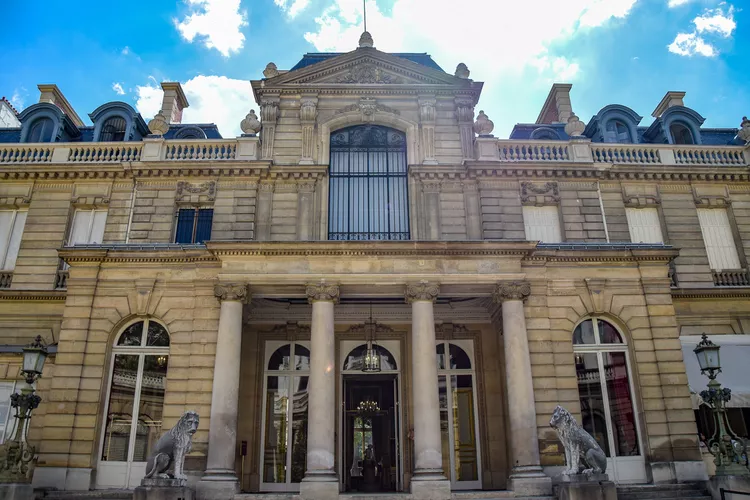Summary
- Location and Contact Information
- Museum Opening Hours and Tickets
- Highlights of the Permanent Collection
- Sights and Attractions Nearby
Discover the Beauty of Musée Jacquemart-André in Paris
Situated in close reach of the bustling Champs-Élysées district and its noisy, crowded streets, the Musée Jacquemart-André serves as a tranquil haven away from the area’s gaggles of tourists and the consumer frenzy for which the “Champs” is renowned. This museum is arguably one of Paris’ finest, with a remarkable collection that often gets overlooked by travelers.
Housed in an opulent 19th-century mansion built by art collectors Edouard André and his wife Nélie Jacquemart, the permanent collection features great works from the Italian Renaissance, 18th-century French painters, and masterpieces from the 17th-century Flemish school. Key works from artists including Fragonard, Botticelli, Van Dyck, Vigée-Lebrun, David, and Uccello form the heart of the exhibits. Louis XV and Louis XVI-era furniture and objets d’art complete the stunning collection.
Location and Contact Information:
The museum is ideally located near the Avenue des Champs-Élysées in the 8th arrondissement of Paris, not far from the Grand Palais.
Getting There
Address: 158 bvd Haussmann, 8th arrondissement
Metro/RER: Miromesnil or St-Phillipe de Roule; RER Charles de Gaulle-Etoile (Line A)
Tel : +33 (0)1 45 62 11 59
Museum Opening Hours and Tickets:
The museum is open daily, including most French public holidays, from 10:00 a.m. to 6:00 p.m. The Jacquemart-André Café is also open every day from 11.45 a.m. to 5.30 p.m., serving snacks, beverages, and light meals.
Tickets: See current full and reduced-rate entry rates here. Admission is free for children under 7 years old and for disabled visitors.
Highlights of the Permanent Collection:
The collections at the Jacquemart-André are divided into four sections: Italian Renaissance, French 18th Century Painting, The Flemish School, and Furniture/Objets d’Art. You don’t need to see all of them in a single visit; however, if time allows, each section is worthwhile and contains several masterpieces.
The Italian Renaissance: The “Italian Museum” features an extensive collection of paintings from Italian Renaissance masters, showcasing works from the Venice and Florentine schools, including artists like Bellini, Mantegna, Uccello, Botticini, and Perugino.
French Painting
This section is dedicated to 18th-century masterpieces from the French school. Here, visitors can admire works such as Boucher’s Venus Asleep, Fragonard’s The News Model, and iconic portraits by Nattier, David, and Vigée-Lebrun.
The Flemish and Dutch Schools
This section showcases 17th-century works from Flemish and Dutch painters like Anton Van Dyck and Rembrandt Van Rijn, illustrating their influence on French artists in the following century.
Furniture and Objets d’Art
Furniture and precious objects from the Louis XV and Louis XVI periods adorn this final section of the permanent collection. Highlights include armchairs upholstered with Beauvais tapestry and crafted by Carpentier, showcasing exquisite craftsmanship.
Sights and Attractions Nearby:
Avenue des Champs-Élysées: Before or after your visit to the museum, take a leisurely stroll along this world-renowned, impossibly wide avenue, perhaps enjoying a drink in one of its many sidewalk cafes.
Arc de Triomphe: A visit to the French capital would be incomplete without viewing this iconic military arch built by Napoleon I to commemorate his victories. Be cautious when crossing the street, however, as this area is known for its dangerous traffic circle.
Grand Palais and Petit Palais: These sister exhibition spaces were both constructed during the Belle Époque/turn of the 20th century. They feature stunning art nouveau architectural elements. The Grand Palais hosts large-scale exhibits and retrospectives, while the Petit Palais hosts a free permanent exhibit that is well worth exploring.





